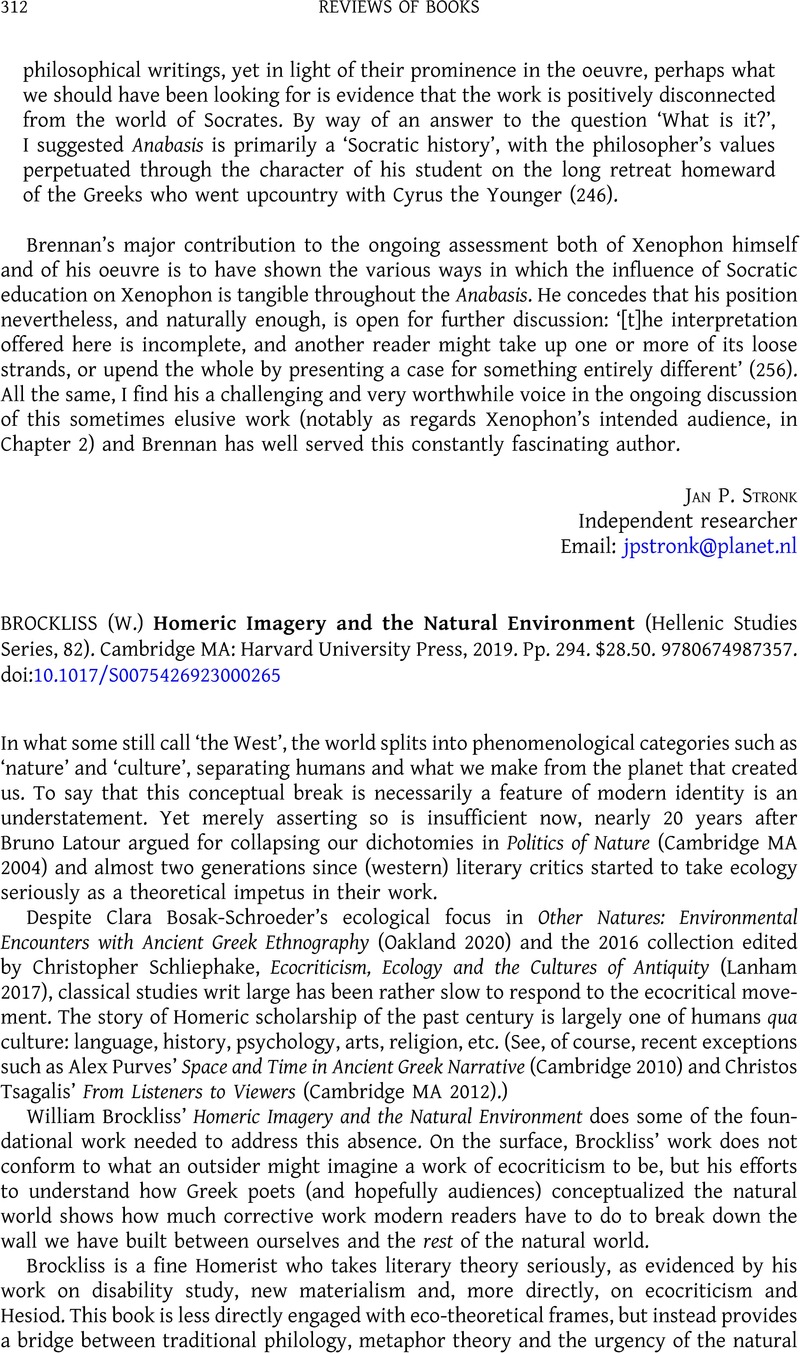No CrossRef data available.
Article contents
(W.) BROCKLISS Homeric Imagery and the Natural Environment (Hellenic Studies Series, 82). Cambridge MA: Harvard University Press, 2019. Pp. 294. $28.50. 9780674987357.
Review products
(W.) BROCKLISS Homeric Imagery and the Natural Environment (Hellenic Studies Series, 82). Cambridge MA: Harvard University Press, 2019. Pp. 294. $28.50. 9780674987357.
Part of:
Literature
Published online by Cambridge University Press: 26 May 2023
Abstract
An abstract is not available for this content so a preview has been provided. Please use the Get access link above for information on how to access this content.

- Type
- Reviews of Books
- Information
- Copyright
- © The Author(s), 2023. Published by Cambridge University Press on behalf of the Society for the Promotion of Hellenic Studies


